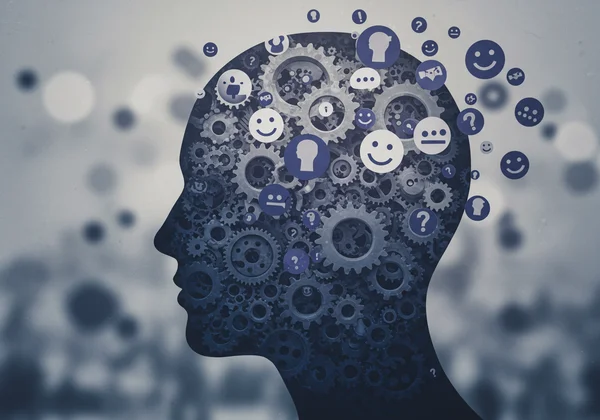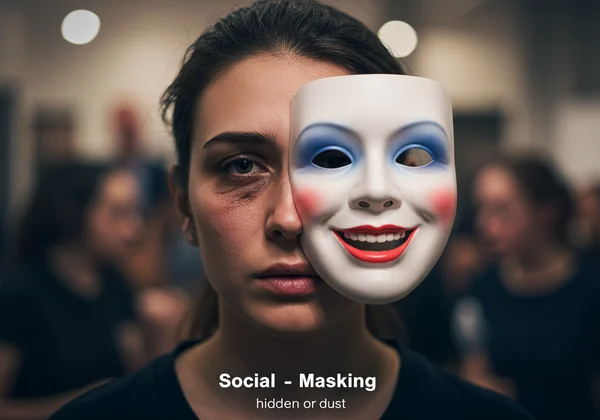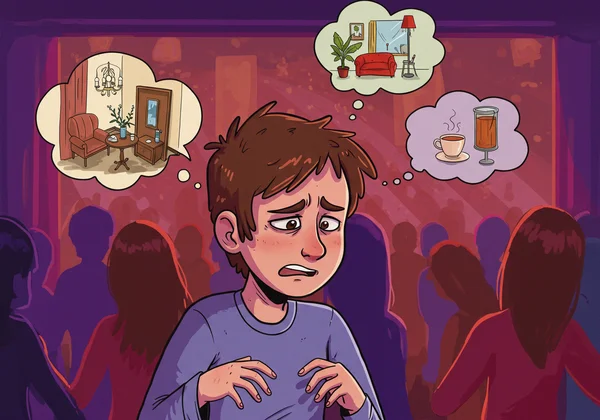Decoding Your CATQ Score: Understanding Autistic Camouflaging
Have you recently taken the CATQ (Camouflaging Autistic Traits Questionnaire) and are now looking at your scores, trying to make sense of it all? If you're wondering what do compensation, masking, and assimilation truly mean for your daily life?, you are not alone. Many neurodivergent individuals, especially adults on a journey of self-discovery, navigate the world using these strategies without fully grasping their mechanics or impact. This feeling of being different, of constantly performing, can be exhausting.
This guide is here to help. We will move beyond the total score to explore the three core pillars of autistic camouflaging as measured by the scientifically validated CATQ. By understanding these sub-scales, you can unlock a deeper awareness of your unique social strategies, validate your experiences, and take the first steps toward a more authentic life. To begin this exploration, you can take the CATQ test and follow along.

Understanding Autistic Compensation: Blending In
One of the most common, yet mentally taxing, forms of camouflaging is compensation. It’s the active process of learning and applying social rules intellectually to make up for intuitive social understanding you may feel you lack. It’s less about hiding who you are and more about building a manual for social interaction.
What is Compensation in Autistic Camouflaging?
Compensation is a proactive strategy. It involves observing others, identifying patterns in their behavior, and creating a set of rules to follow in similar situations. If you've ever felt like an anthropologist studying a foreign culture just to get through a casual conversation, you are likely familiar with compensation. This isn't about faking emotions but about logically figuring out the "correct" response in a social setting, something that may come naturally to neurotypical individuals.
This strategy requires immense cognitive effort. It means you are constantly analyzing, predicting, and executing social scripts. While often effective for navigating social environments, it can leave you feeling drained and disconnected from the present moment because your mind is working overtime.
Common Compensation Strategies & Relatable Examples
Do any of these autism compensation strategies sound familiar?
- Scripting: Mentally preparing and rehearsing conversations before they happen, from ordering coffee to attending a job interview.
- Mimicking: Watching characters in movies or observing popular peers to learn how to express emotions, use gestures, or adopt certain phrases.
- Rule-Based Interaction: Creating strict rules for social engagement, such as, "Make eye contact for three seconds, then look away," or "Always ask three questions about the other person."
- Intellectualizing: Focusing on facts and data in conversations to steer away from unpredictable emotional territory.
If you find yourself relying on these techniques, it's a testament to your resilience and adaptability. Understanding this is the first step in managing the energy it requires.

Exploring Social Masking: Hiding Your True Self
While compensation is about building a social toolkit, social masking is about hiding the parts of yourself that you fear might be judged as "different" or "unacceptable." It is a reactive strategy driven by a desire to avoid negative attention or social rejection.
Identifying Key Social Masking Behaviors
Many people who use an autistic masking test discover they've been engaging in these behaviors for so long they barely notice them. Masking often involves actively suppressing your natural tendencies.
Common masking behaviors include:
- Forcing or Faking Eye Contact: Enduring uncomfortable eye contact because it's the "polite" thing to do.
- Suppressing Stims: Consciously stopping yourself from hand-flapping, rocking, fidgeting, or other self-soothing movements.
- Hiding Special Interests: Downplaying or completely concealing your deep passions to avoid being seen as "obsessive" or "weird."
- Forcing Facial Expressions: Manually putting on a smile at a party or feigning a look of interest during a boring conversation.
How do I know if I'm masking autism? If you consistently feel like you're putting on a performance for others and feel exhausted afterward, that is a strong indicator of masking. Recognizing these behaviors is crucial, as they come at a significant cost. For a clearer picture, the CATQ online test can provide quantitative insight.
The Emotional & Cognitive Toll of Persistent Masking
Constantly hiding your true self is incredibly draining. It can lead to a state known as autistic burnout, characterized by profound exhaustion, increased sensitivity, and a loss of skills. The chronic stress of masking can also contribute to anxiety, depression, and a fractured sense of identity. You might feel like a fraud, constantly afraid of being "found out." This is not a personal failing; it's a predictable outcome of sustained social pressure.

Deciphering Assimilation in Autistic Traits
The third pillar of camouflaging, assimilation, is perhaps the most subtle. It isn't just about learning rules or hiding behaviors; it's about forcing yourself to participate in social situations that you find draining or unnatural, simply to appear neurotypical.
Assimilation vs. Masking: Key Differences Explained
If masking is putting on a costume, assimilation autism is forcing yourself to stay at a party when all you want to do is go home. While masking involves hiding your authentic reactions, assimilation involves enduring uncomfortable environments. You might not actively fake a smile (masking), but you will attend the loud, crowded social gathering because you feel you have to.
The core difference is action versus endurance. Masking is changing your behavior. Assimilation is forcing your presence in a situation that goes against your innate needs for quiet, solitude, or low-sensory input. It's the silent battle of pushing through overwhelming social demands.
How Assimilation Shapes Your Identity & Social Interactions
Persistent assimilation can erode your self-trust. You learn to ignore your own internal signals of distress and discomfort. Over time, this can make it difficult to know what you truly want or need, leading to a deep sense of alienation from yourself. You might find it hard to build genuine connections because you're so focused on just "surviving" the interaction that you can't be present.
Understanding your assimilation score can be a powerful validator, confirming that your need for recovery time after socializing is real and justified.

Interpreting Your CATQ Sub-Scale Scores
After completing the assessment, you receive a total score and scores for each of these three sub-scales. So, what does a high CATQ score meaning? The numbers are not a label but a map, pointing to the specific ways you navigate the social world.
What a High Score in Each Sub-Scale Means
Your CATQ scores offer a unique profile of your camouflaging style:
- High Compensation Score: Suggests you rely heavily on intellectual strategies, rules, and mimicry to interact socially. You are a skilled analyst of human behavior.
- High Masking Score: Indicates you spend significant energy actively suppressing your natural autistic traits, such as stims or special interests, to fit in.
- High Assimilation Score: Means you frequently push yourself to endure socially and sensory-demanding situations, even when they cause you distress.
It's common to score high in one area or have a mix across all three. There is no "good" or "bad" profile. The goal is simply self-awareness.
Beyond the Numbers: Actionable Insights for Self-Understanding
Your scores are the start of a conversation with yourself. They provide a language for experiences you may have struggled to articulate. What truly matters is what you do with this newfound knowledge. To go deeper than just numbers, the optional AI-powered analysis available on our platform can translate your unique answers into personalized insights about your strengths, challenges, and specific daily-life impacts, offering actionable advice.
This allows you to move from simply knowing you camouflage to understanding how and why, empowering you to make conscious choices about where and when you use these strategies.
Embracing Authenticity: Your Journey Beyond Camouflaging
Understanding your personal blend of compensation, masking, and assimilation is a profound act of self-discovery and self-compassion. It validates the immense effort you've put into navigating a world not always built for you. This knowledge empowers you to reclaim your energy, honor your needs, and begin living more authentically.
Your journey is your own. The CATQ is simply a tool to light the path. If you're ready to gain clarity, we invite you to start your journey today. Take the free, confidential test and consider the personalized AI report to turn your scores into a roadmap for a more authentic you.
Disclaimer: This article and the CATQ test are for informational and self-exploration purposes only. They are not a substitute for professional medical advice, diagnosis, or treatment. Please consult a qualified healthcare professional for any health concerns.
Frequently Asked Questions About CATQ Sub-Scales
What is the CATQ test in simple terms?
The CATQ test, or Camouflaging Autistic Traits Questionnaire, is a scientifically-validated self-assessment tool designed to measure the extent to which an adult camouflages autistic traits. It breaks down camouflaging into three key areas: Compensation, Masking, and Assimilation, helping you understand the specific strategies you use to navigate social situations.
What do compensation, masking, and assimilation mean in the context of autism?
In short:
- Compensation is learning social rules intellectually to "compensate" for an intuitive lack.
- Masking is actively hiding or suppressing natural autistic behaviors (like stimming).
- Assimilation is forcing yourself to endure uncomfortable social situations to appear neurotypical. You can get a detailed breakdown of your personal style by taking the free CATQ test.
What is considered a high score on the CATQ and its sub-scales?
The original 2018 study by Hull et al. identified a total score of 100 as a potential cut-off for distinguishing autistic individuals from neurotypical individuals. However, it's crucial to remember this is a tool for self-reflection, not diagnosis. A "high" score on any sub-scale simply indicates a strong reliance on that particular camouflaging strategy. The most valuable insight comes from understanding your unique pattern of scores.
How can understanding my CATQ sub-scores help me?
Understanding your sub-scores helps you identify exactly where your energy is going. It can explain why you feel so exhausted after certain social events (autistic burnout) and give you permission to set boundaries. This awareness is the first step toward "unmasking" in safe environments, reducing energy expenditure, and cultivating a stronger sense of self.